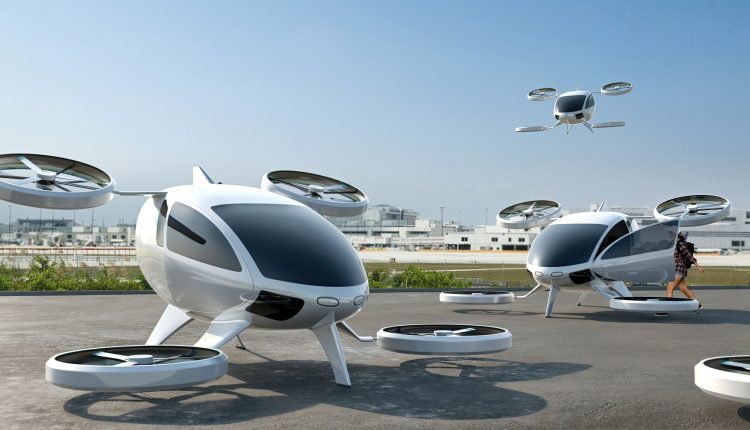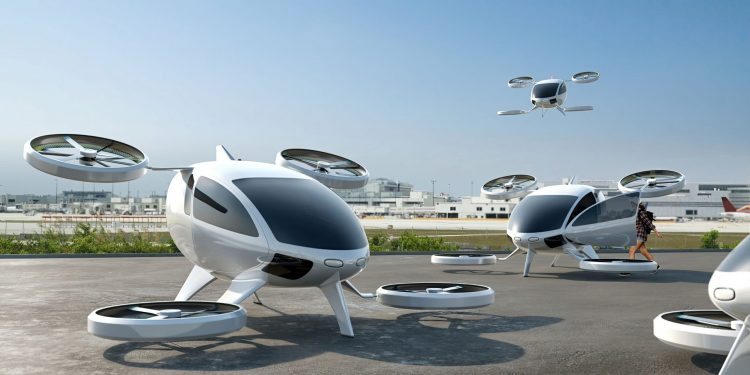
Small ‘air taxis’ powered by electricity or hydrogen and linking communities could take off in the next few years as Liverpool Airport tells LBN it is aware of the ‘potential’ of such aircraft. Tony McDonough reports

Small ‘air taxis’ could be taking off and landing at Liverpool Airport in the next few years.
In the past couple of weeks the UK Civil Aviation Authority (CAA) has launched a consultation into so-called VTOL aircraft and their potential as a low-carbon way of linking UK communities by air.
VTOL stands for vertical take-off and landing. Often referred to as air taxis, they are designed to land and take off like helicopters, but are powered by electricity or hydrogen.
In the past couple of weeks a Swiss tech start-up venture, Sirius Aviation, has unveiled what it claims is the world’s first hydrogen-powered VTOL. It says they will have a longer range than electric-powered VTOLs and pledges have one in the air by 2025.
Its prototype, called the Millennium, will have room for five passengers and a pilot, and will have a flight range of 650 miles.
In the UK the CAA wants to have a policy in place ahead of the introduction of VTOLs, which will take off and land at facilities known as vertiports.
The CAA is looking to ensure that the future operations at the aerodromes looking to support the activities of these novel aircraft are “safe, efficient, equitable and secure”.
This comes after extensive engagement with representatives from across the industry including vertiport developers, existing aerodromes, and potential operators.
Liverpool John Lennon Airport, which potentially has space for a vertiports, says it is looking at the idea and wants more detail on how VTOLs would operate.
A spokesperson said: “We’re aware of this potential new aviation sector, but our understanding is that this technology is in its infancy.
“We would need to understand the requirements of such operators and how it might impact on our existing operations, both on the ground and in the skies.”
With hundreds of airfields dotted across the UK, a network to connect communities by air will be possible with the introduction of this infrastructure.
CAA policy will help prepare for eVTOL aircraft to operate in the UK. Sophie O’Sullivan, the regulator’s head of future safety and innovation, said: “We are a committed partner to the Government’s Future of Flight Programme.
“Enabling the introduction of innovative infrastructure is one of our key strategic objectives. This consultation is a big step towards enabling this new and innovative way of travelling to become part of our everyday life.
“UK aerodromes are vital in unlocking the future of aviation operations. By leveraging existing regulation, we’re enabling future operators and aerodromes to develop their understanding and operational expertise.
“At the same time we are growing our collective knowledge of the technology and operational scenarios to support this infrastructure.”

Proposals put forward by the CAA acknowledge that existing aerodromes are already equipped to handle aviation activities and are best placed to have the first design specifications for vertiports introduced.
Using existing infrastructure will give VTOL aircraft a place to operate from while the aviation industry becomes more familiar with their design, operations and performance.
Factors being consulted on look at placing additional safety requirements on existing aerodromes should they want to establish VTOL aircraft operations.
READ MORE: SSP to invest £9m in Liverpool Airport F&B expansion
READ MORE: Liverpool Airport launches Community Fund
This includes the design of operating areas, obstacle limitation surfaces and visual aids and rescue and firefighting services.
Design principles set out will form the initial basis of bespoke vertiport design, the further detail of which will be established once VTOL aircraft manufacturers and operators provide further data.
It follows the regulator publishing guidance on how the eVTOL industry could adopt key consumer principles, which highlighted the importance of new aircraft and infrastructure being accessible for those with reduced mobility.
